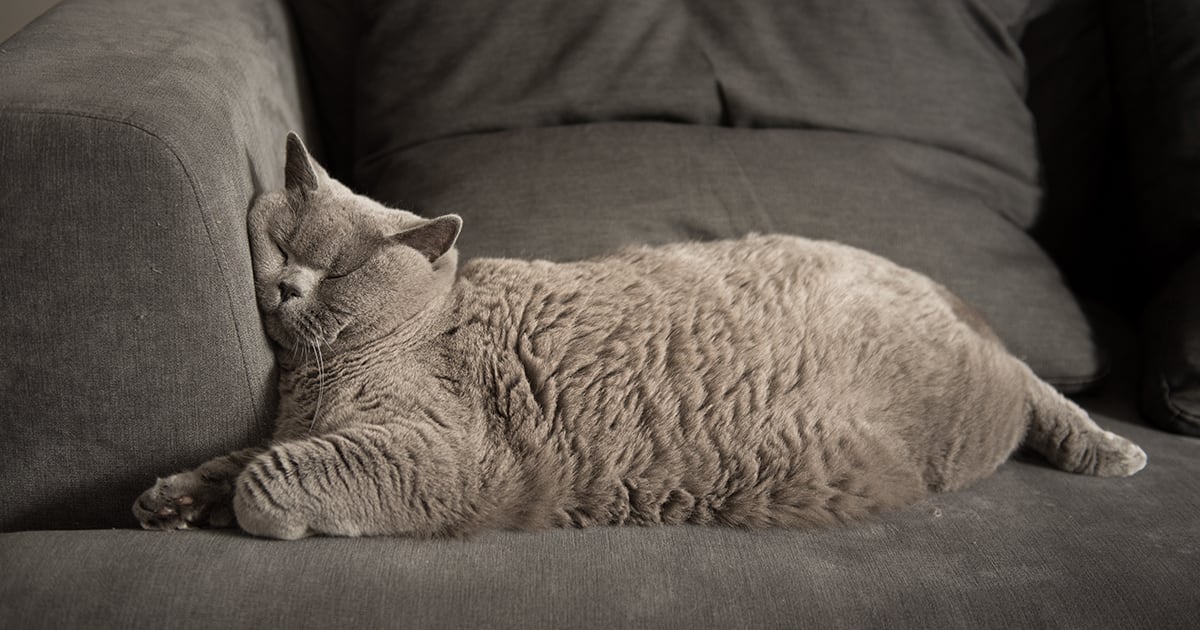Seriously, How Can I Get My Cat to Exercise?

Cutting calories is only part of the formula for helping your cat shed those excess pounds. But exercise can be just as important, not only for weight loss, but to help your cat stay healthy both physically and mentally.
Easier said than done, you might think, considering cats spend an average of 15 hours a day sleeping. Even so, there are some simple things you can do to get your couch potato off the couch.
Before you try, ask your veterinarian to examine your cat and make sure there aren’t any underlying health issues, like arthritis, that may make some kinds of exercise painful or difficult. They can recommend exercises that are right for your cat in those circumstances.
Start with one or two short, 5-minute sessions a day, then gradually work up to longer or more frequent workouts. Think of ways to motivate your cat’s natural instincts to explore, hunt prey and climb. Here are some ideas to boost your cat’s activity:
- Make your cat move for food. Instead of pouring an entire meal into a bowl, toss one kibble at a time around the room to see if your cat will run after it. Or divide up the meal and hide it in different areas to encourage your cat to walk and even climb or descend stairs. If your cat prefers canned food, lure him or her around the house with a spoonful at a time.
- Feed kibble in puzzle toys. Your cat will typically need to manipulate the toy, which usually dispenses a kibble at a time. It’s a good way to exercise your cat’s mind at the same time.
- Engage your cat’s prey drive with a laser pointer or pen light. A fast-moving spot of light can give your cat the thrill of the chase before it even realizes it’s moving. Just make sure to give it a toy at the end of the game, to eliminate the frustration of never actually catching something. And never shine the laser directly in your cat’s eye.
- Stock up the toy chest. Cats love toys that wiggle or move, and they’re happy to bat around balls or even balled-up pieces of paper. Rotate the toys periodically to keep your cat from getting bored. Make sure there’s nothing on the toys that can be chewed and inadvertently swallowed.
- Create an obstacle course. Use feathers attached to a wand to encourage your cat to weave between your legs, walk in a circle or jump onto the couch or over other objects.
- Get your cat climbing. Multi-level cat trees and perches are a great way to get your cat to stretch, jump and move. Place kibble on different levels to start them exploring.
- Teach your cat to use an exercise wheel. Like a hamster wheel, this toy could have your cat logging miles a day. Start by wedging something on either side of the wheel to prevent it from moving. Then, place treats on the wheel to attract your cat. Eventually remove the objects holding it in place and steady the wheel with your hand, allowing a small amount of movement, as your cat is standing on the wheel. Gradually entice your cat to walk on the wheel by dangling a feather toy or treat in front of them.
- Go for a walk. Many cats can be trained to go for a walk, just like a dog. Start by placing your cat in a harness, and let them wear it around the house until it’s comfortable. Then add a leash and use treats to entice your cat to walk a bit around the house. Gradually make your way outdoors.
- Consider adopting a playmate. Another kitty may be just what the exercise coach ordered. If they become pals, they may play hide-and-seek, chase each other or just wrestle on the rug. They may have so much fun they won’t even know they’re exercising.
RELATED POST: CAT DIETS: WHEN THE SCALE WON’T BUDGE
The information in this blog has been developed with our veterinarian and is designed to help educate pet parents. If you have questions or concerns about your pet’s health or nutrition, please talk with your veterinarian.
